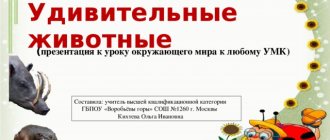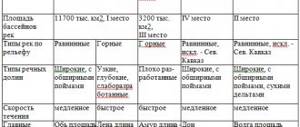Geography of the main types of economy in Russia
In order to understand the modern geography of the Russian economy, it is necessary to know how it has changed historically. The entire socio-economic history of mankind can be divided into three stages: pre-industrial
,
industrial
and
post-industrial
.
Pre-industrial stage
- This is the earliest stage of development of society, existing until the mid-eighteenth century.
Subsistence agricultural production predominated during this era. Man could realize himself only through agriculture. This stage is characterized by a low level of economic development of society. The industrial stage began with the development of accumulation by individuals of significant funds necessary for the creation of large enterprises. Thus, in the countries of Europe, North America, and the Soviet Union, the priority sectors of the world economy were not agriculture, but industry and construction. An industrial society
is a society based on the industrial sector of the economy. This industrial sphere includes: the division of labor and the growth of its productivity, a high level of competition, accelerated development of human capital, a high level of urbanization and an increase in the quality and standard of living of society.
The main trend in the development of industrial society has been the internationalization of production. Internationalization of production is the establishment of more or less stable production links between enterprises in different countries, as a result of which the production process in one country becomes part of a process occurring on a global scale. The main factor of internationalization was the transition of the countries of the world in the sixties-eighties of the twentieth century to a new level of development - the post-industrial stage.
Post-industrial society
is a society whose economy is dominated by information technology. The main intensive factor in the development of post-industrial society is the so-called human capital. This is a set of knowledge, skills and abilities used to meet the diverse needs of an individual and society as a whole. In other words, human capital refers to professionals, highly educated people, science and knowledge in all types of economic innovation activities.
The main sector of the economy of the pre-industrial stage is agriculture
, industrial -
industry
, post-industrial -
service sector
.
Land
is the main limiting factor of the pre-industrial stage,
capital
- of the industrial stage,
information
- of the post-industrial stage.
The dominant social group of the pre-industrial stage are landowners
, of the industrial stage -
owners of capital
, and finally, of the post-industrial stage -
owners of information
. Industrial and scientific-technical revolutions are unique boundaries between the stages of social development.
The Industrial Revolution is associated not just with the beginning of the mass use of machines, but also with a change in the entire structure of society. It was accompanied by a sharp increase in labor productivity, rapid urbanization, the beginning of rapid economic growth and an increase in the living standards of the population.
The scientific and technological revolution (abbreviated STR) is a radical qualitative transformation of the productive forces, a qualitative leap in the structure and dynamics of development of the productive forces. The scientific and technological revolution in the narrow sense is a radical restructuring of the technical foundations of material production, which began in the mid-twentieth century on the basis of the transformation of science into a leading factor of production, as a result of which the transformation of industrial society into a post-industrial one occurs. The modern era of scientific and technological revolution began in 1940-1950. It was then that its main directions were born and developed. Namely: production automation, control and management based on electronics; creation and use of new structural materials and others.
As a rule, the entire economy is conventionally divided into sectors. Primary sector
The economy unites industries related to the extraction of raw materials and their processing into semi-finished products. The primary sector includes agriculture, fishing, forestry, hunting and the extraction of natural raw materials (coal, oil, metal ores, and so on). The primary sector was the very first in the history of mankind, it began with the economic activities of primitive people (gathering and hunting). Until the beginning of the Industrial Revolution, the primary sector occupied a critical place in the world economy, and within the primary sector itself, the most important industry was agriculture.
Secondary sector of economies
and – this is the manufacturing industry and construction. The reason for the transition from a primary sector economy to a secondary sector economy was the improvement of technology in agriculture and other extractive industries, which led to increased productivity. In this regard, surplus labor and resources were released, which were used for industrial development. You can use the following figurative example: if previously a peasant with his labor could feed only himself and one or two people, then due to the increase in productivity he could feed a large group of people who were thus freed from the need to work in agriculture.
Tertiary sector of the economy
This is the so-called service sector. That is, a part of the economy that includes all types of commercial and non-commercial services. The service sector includes: the service sector (infrastructure services in the production and service sectors of the economy); social sphere (non-production and legal-financial services of the economy). It is the service sector that in economically developed countries makes up the main part of the economy in terms of the number of employees (more than sixty percent).
The transition to the dominant tertiary economy is associated with the “increase in labor productivity in industry” - and in its real manifestation - the displacement of people from the productive process and their replacement with automated and robotic machines. In this connection, resources were “freed up” for the development of the service sector. As a rule, the service sector includes transport, communications, trade, tourism, healthcare and others.
Quaternary sector economy
Sciences are areas of economics that are included in the concept of the “knowledge economy.” Includes the research and development necessary to produce products from natural resources. For example, a logging company might explore ways to use partially burned wood so that undamaged parts of the wood can be converted into wood pulp for paper production. Information technology and the education industry are also included in this sector.
Most countries in the world currently have an agricultural economy, in a number of them mineral resources are extracted - in short, the primary sector predominates there. These are the so-called developing countries with a low standard of living. There are relatively fewer developed industrial countries where industry plays a leading role. There are even fewer post-industrial countries where the majority of the population is employed in the service sector. These are the states of Western Europe, the United States of America, Canada and other countries with the highest standard of living.
The three types of countries listed are a reflection of the three stages of economic development. Initially, among the many agricultural countries, a number of industrial ones appear. At the next stage, some industrial countries move to a post-industrial economy.
Why some countries get ahead while others lag behind is one of the most difficult problems that has not yet been solved by scientists. Some features of the development of individual countries can only be partially explained. For example, the more northern location of Russia (compared to other countries) requires higher fuel and energy costs, reduces the efficiency of agriculture and thereby creates less favorable conditions for economic development for our country.
The level of development of the Russian economy, at least for the last three centuries, was higher than in most countries of the world, but at the same time lower than in the most advanced countries. In order to better imagine the uniqueness of the Russian economy and its geographical features, one should evaluate its functional structure.
The first lower floors represent industries that directly extract (use) and process natural resources. They depend on natural conditions. On subsequent floors, the role of the natural factor decreases. They carry out deeper processing of natural resources into finished products, and the importance of social factors, science, and the quality of labor increases. The building of the economy is completed by its upper floors - the service sector, as well as high-tech industries.
Thus, it turns out that from the bottom up, gradually decreasing, there is a flow of natural resources, and towards it, from top to bottom, there is a flow of scientific information. This diagram reflects the division of the economy into spheres: primary (lower floors), secondary (manufacturing), tertiary (services) and quaternary (science and management).
Functional structure of the Russian economy
Agriculture
The main industries include:
- livestock farming;
- crop production;
- fishing.
Central district. Specialization: growing potatoes and flax, sugar beets, meat and dairy farming.
Northwest. Specialization: livestock products, growing grain, potatoes, flax, feed crops, fish production.
Volga region. Specialization: growing grains, vegetables and melons, livestock products, fishing.
European south. Specialization: arable farming, cultivation of melons and essential oil crops, tea, tobacco; winemaking, sheep breeding, cattle breeding.
North Caucasus. Specialization: growing grains, rice, corn, grapes, subtropical crops. In livestock farming: pig farming, poultry farming, sheep farming.
Ural. Specialization: growing spring wheat, vegetable growing, livestock farming.
Western Siberia. Specialization: livestock farming, grain growing, reindeer husbandry, fur farming.
Eastern Siberia. Specialization: fishing, meat and dairy farming, sheep breeding, crop farming.
Far East. Specialization: growing soybeans, fruit and vegetable crops, reindeer husbandry, fur farming.
Watch a video about Russia's achievements in agriculture.
Return to contents
Economy of the Russian North
Features are as follows:
- The development of condensed gas deposits has entered an active phase.
- The territories of the North lend themselves to modernization much more slowly than other regions.
- The North lost a significant part of its productive capital. Over the past 20 years, almost 20 million people have left the region.
- Sakhalin-2 facilities have reached their design capacity.
- The construction of the railway in Yamal has been completed.
Table 2. Dynamics of wages and population decline in the northern regions of Russia
| Territory | Average income per month (thousand rubles) | Population migration (thousand people) | ||||||
| 2007 | 2008 | 2009 | 2010 | 2007 | 2008 | 2009 | 2010 | |
| Karelia | 13,3 | 16,7 | 18,3 | 19,9 | 1,2 | 0,3 | −0,6 | −1 |
| Komi | 7,1 | 20,6 | 23,1 | 25,7 | −5,7 | −9,1 | −7,1 | −8,6 |
| Sakha | 19,5 | 23,8 | 26,6 | 28,6 | −5,5 | −7,4 | −7 | −7,1 |
| Arkhangelsk region | 14,5 | 18 | 20 | 22,2 | −4,6 | −6,5 | −5,1 | −8 |
| Kamchatka | 21,9 | 27,1 | 31,7 | 36,5 | −1,5 | −2,2 | −1,3 | −0,5 |
| Magadan | 23,3 | 30 | 33 | 37,6 | −2,3 | −2,4 | −1,5 | −1,9 |
| Murmansk | 18,9 | 23,2 | 26,5 | 28,9 | −4,9 | −7,4 | −4,8 | −6,7 |
| Sakhalin | 23,1 | 30,4 | 33,3 | 35,8 | −1,4 | −2,9 | −2,5 | −3,1 |
| Nenets Autonomous Okrug | 34,4 | 41,5 | 44,3 | 47,3 | −0,1 | −0,2 | 0,1 | −0,1 |
| Khanty-Mansiysk | 32,3 | 37,2 | 39,1 | 41,5 | 4,9 | 1,7 | 4,8 | 3,7 |
| Chukotka | 31,5 | 38,8 | 42,9 | 47,4 | −0,4 | −0,9 | −1 | −0,9 |
| Yamalo-Nenets Autonomous Okrug | 37,4 | 43,6 | 46,9 | 52,6 | −0,6 | −4 | −2,4 | −5 |
Return to contents
Natural resources in economics
Mineral resources:
- Oil, gas, coal, shale, peat.
- Ferrous metal ores, non-ferrous metal ores, precious metals.
- Mining chemical raw materials, technical ores (Table 3).
Table 3. Approximate value of minerals in the Russian Federation
| Minerals | Cost (billion dollars) |
| Noble metals | 472 |
| Non-ferrous metals | 2107 |
| Black metals | 2362 |
| Oil | 5081 |
| Coal | 6951 |
| Gas (natural) | 9890 |
Water resources:
Renewable river flow resources in Russia - 4.3 thousand square meters. km (Table 4).
Read about the countries most endowed with water resources.
Table 4. Water resources in different countries of the world
| A country | Water resources within the state (annual average) | |
| total (km cubic) | per inhabitant (m3) | |
| Belarus | 37 | 3634 |
| Hungary | 6 | 598 |
| Germany | 107 | 1301 |
| Kazakhstan | 75 | 4649 |
| China | 2812 | 2201 |
| USA | 2460 | 8838 |
| Ukraine | 53 | 1052 |
| France | 180 | 3047 |
| Sweden | 178 | 19 977 |
| South Africa | 45 | 1110 |
| Japan | 430 | 3393 |
| Russia | 4314 | 29 358 |
Return to contents
Land resources
Russia occupies 1/9 of the entire earth's landmass. The main area of land suitable for arable land is located in the European part and southern Siberia. Pasture territory - southeast of the Russian Plain and south of the West Siberian Plain.
The country's land fund includes lands of the following significance:
- Agricultural - 38%.
- Settled areas - 0.4%.
- Non-agricultural purposes - 1.2%.
- Natural reserve fund - 1.2%.
- Forest fund - 51.4%.
- Water Fund - 1%.
- State reserve - 6.9%.
Return to contents
Biological resources
The main resources are fishing, hunting and forestry.
- The country's forest cover is 44.7%. Main species: larch, spruce, pine.
- Fish resources. The country is home to 2,900 species of fish (13% of the world's fauna). Fishing and processing are constantly declining.
- Hunting resources. The number of main species of game animals is presented in Table 5.
Table 5
| Kind of animal | Number of individuals in 2014 (thousands) |
| Elk | 891 |
| Reindeer | 1004 |
| Roe | 980 |
| Noble deer | 255 |
| Boar | 349 |
| Musk deer | 236 |
| Caucasian tour | 28 |
| Chamois | 4 |
| Mountain goat | 12 |
| bighorn sheep | 74 |
| Muskox | 7 |
| Saiga antelope | 5 |
Endangered game species
Return to contents
Recreational resources
Main recreational zones: Northern, Northwestern and Central Caucasus.
Conditions for rest:
- Developed tourist infrastructure.
- Mineral water.
- Numerous national and world-class attractions.
Return to contents






